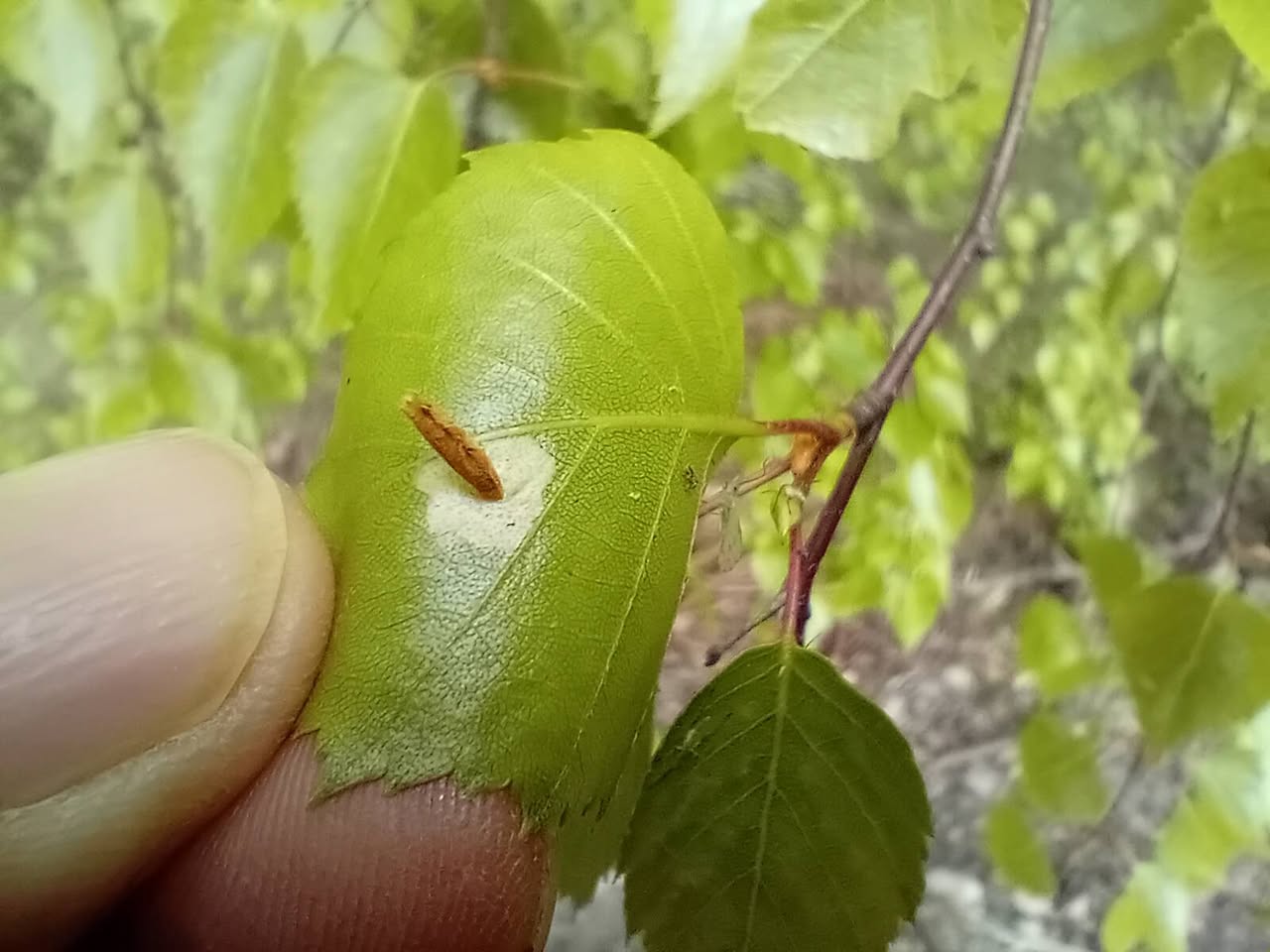 Leaf-miner: CAT L – The leaf or a Photo required –
Leaf-miner: CAT L – The leaf or a Photo required –  Larval Case: C2 – Photo or specimen of larval case/plant required –
Larval Case: C2 – Photo or specimen of larval case/plant required –  – click for General Verification Guidelines |
– click for General Verification Guidelines |  – click for Specific Verification Guidelines
– click for Specific Verification Guidelines  – Generally Common / Widespread
– Generally Common / Widespread  – Leaf Miner
– Leaf Miner
 – difficult to identify – detailed examination required, often a Gen Det and/or specimen and quality photographs are required.
– difficult to identify – detailed examination required, often a Gen Det and/or specimen and quality photographs are required.Confusion Species: C.coracipennella and C.gryphipennella
 Blue-coded] moths are not stored on the website at this current time.
Blue-coded] moths are not stored on the website at this current time. 


Image Gallery
No gallery images found for this moth.
Distribution Map for Coleophora serratella
↳ 3 from After 2025
↳ 2 from 2020 - 2024
↳ 9 from Before 2020
If the Map Layers function fails, just refresh the page and it should be OK after. Use the +- zoom on the top left, or on a tablet, use two fingers to zoom. Remember, the last layer you ticked is the one which displays the popup information - they sit on top of each other - de-select then re-select, to see the popup values.
Bedrock Geology ** indirectly affects moth distribution by influencing the type of habitat and food plants available in an area. In turn, this may affect the types of moths that can thrive, or where they can most likely be found.
NBN Atlas UK Distribution for – Coleophora serratella
⚠️ Please wait for the map to load fully – do not click the link shown.
Note – the NBN Atlas datasets are listed in the map below and vary in their currency (uptodateness) – however,
the map does give a general indication of the moth's distribution across the UK.
Monthly Records By Year:
Coleophora serratella
( data includes both Larvae and Adult Stages )
Monthly Counts By Year: Coleophora serratella
( data is based on 'Adult' stage records only. )
First/Last Recorded Dates: Coleophora serratella
Adult-only & Anything [Larvae, Pupae, Adult, Mines]
Shading shows moth presence between dates
Click the colour discs below to Select/De-select as Required
Recordings By Year: Coleophora serratella
( All data includes both Larvae and Adult Stages )
Annual Growth Rate (AGR): Coleophora serratella
AGR: 0% | Total % Change: 0%
Coleophora serratella
Insufficient records/data for an AGR analysis
Coleophora serratella
Insufficient records/data for a CUSUM analysis
Hectad (10kmx10km) Coverage: Coleophora serratella
( data includes both Larvae and Adult Stages )
Flight Periods – Indicative –vs– Recorded Data
Coleophora serratella
Coleophora serratella
( data includes Adult Stage only )
Flight Period chart – the grey hatched area above, which can cross one or more months, pictorially represents the best guess we have for this moth's flight periods [month/s]. The coloured lines represent the actual months seen in flight, from site observation records received between 2020-2025.
Mine Periods – Indicative –vs– Recorded Data
Coleophora serratella
Coleophora serratella
( data includes both Larvae and Adult Stages )
Mine Period chart – the grey hatched area above, which can cross one or more months, pictorially represents the best guess we have for this moth's mine periods [month/s]. The coloured lines represent the actual months seen mining, from site observation records received between 2020-2025.
Records Behind the Map and Charts - Coleophora serratella – 14 records available
Listed by Year - descending - scroll across to see all table columns
| Site Name | Tetrad | Date | Count | Stage | Source |
|---|---|---|---|---|---|
| DWT Wyver Lane | SK34P | 13/08/2025 | 1 | mine (empty) | vc57_irecords_extract |
| Markham Vale South Tip | SK47K | 05/05/2025 | 10 | larval case | vc57_irecords_extract |
| Derbyshire Wild Life Trust Long Clough | SK09G | 03/05/2025 | 1 | Larval case | vc57_irecords_extract |
| Kings newton | SK32Y | 26/04/2024 | 5 | larval case | vc57_irecords_extract |
| Kings Newton Fields | SK32Y | 19/06/2022 | 1 | Pupa | vc57_irecords_extract |
| Shillito Wood | SK27X | 20/07/2015 | 1 | pre-adult | vc57_irecords_extract |
| Longshaw Estate and Padley Gorge | SK27P | 15/07/2015 | 1 | pre-adult | vc57_irecords_extract |
| Ramsley Moor and Reservoir | SK27X | 26/05/2015 | 3 | pre-adult | vc57_irecords_extract |
| Millennium Meadow NR, Duffield | SK34L | 03/05/2014 | 1 | Larvae | vc57_danes_bc_data |
| Millennium Meadow NR, Duffield | SK34L | 28/04/2014 | 1 | Larvae | vc57_danes_bc_data |
| Ladybower Resr | SK18U | 03/09/2010 | 1 | Case | vc57_danes_bc_data |
| Padley Gorge, Nether Padley | SK27P | 19/08/2010 | 1 | Case | vc57_danes_bc_data |
| Crich Chase, Ambergate (site not precise) | SK35L | 27/06/1996 | 1 | Adult | vc57_danes_bc_data |
| Clough Wood,Darley Dale | SK26K | 19/05/1995 | 1 | Cocoon | vc57_danes_bc_data |



